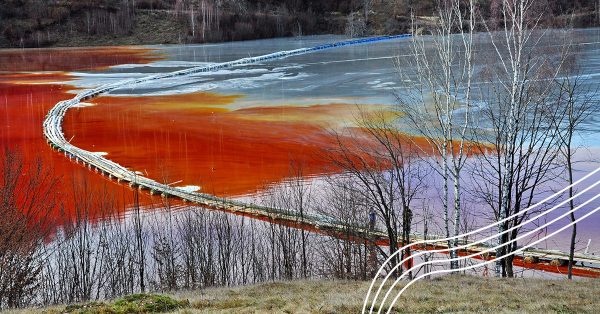Demand for gold shows no sign of waning but mining companies are facing greater opposition from local communities concerned about the environmental impact of the industry’s toxic processes.
Under the town of Curraghinalt, in a remote corner of the Sperrin mountains, in County Tyrone in Northern Ireland, sits a 460 million-year-old gold seam with the potential to produce 130,000 ounces (4 tonnes) of gold a year for the next 20 years or more. Some, including the mining company hoping to extract the precious metal, Dalradian Gold, say the mine would be the largest in the UK and bring great prosperity to the area.
The Northern Ireland economy is still plagued by the Troubles (30 years of conflict), when jobs and investment opportunities stagnated, but mining companies face a new kind of trouble – protests from the local community.
Underground lies a rich gold reserve, but above ground are rolling hills, farms, wilderness and communities worried that the environment will be decimated and their health jeopardised by the toxic processes inherent in so much gold processing.
Despite Dalradian Gold saying it has put a swathe of environmental safeguards in place and has dropped its plans to use cyanide at the site, its development proposal has been met with steep opposition. The wave of public opposition included more than 41,000 public comments – 90% of which objected to the project.
“The water will be poisoned, the air will be poisoned, the land will be contaminated – and ultimately people’s health will suffer” is a sentiment echoed among the protesters at Curraghinault. It is also at the heart of protests in other parts of the world, including at the Pascua-Lama mine in Chile and the mine at Cononish in Loch Lomond National Park in Scotland, as locals voice concerns about the impact of toxic gold processing.
One of the biggest risks gold miners face today is the community’s growing environmental awareness and concern potentially threatening their social licence to operate. The Irish example is but the pointy end of a trend the industry is grappling with worldwide.
But non-toxic gold extraction and processing offers miners the most ultimate solution.
Clean Mining’s clean gold technology replaces traditional cyanide-based metallurgical processes with an organic alternative using a non-flammable, water-soluble reagent. The reagent can be recycled and, when used in conjunction with de-watering system, the eco-friendly process produces dry waste potentially eliminating the need for potentially volatile and high risk tailings dams.



